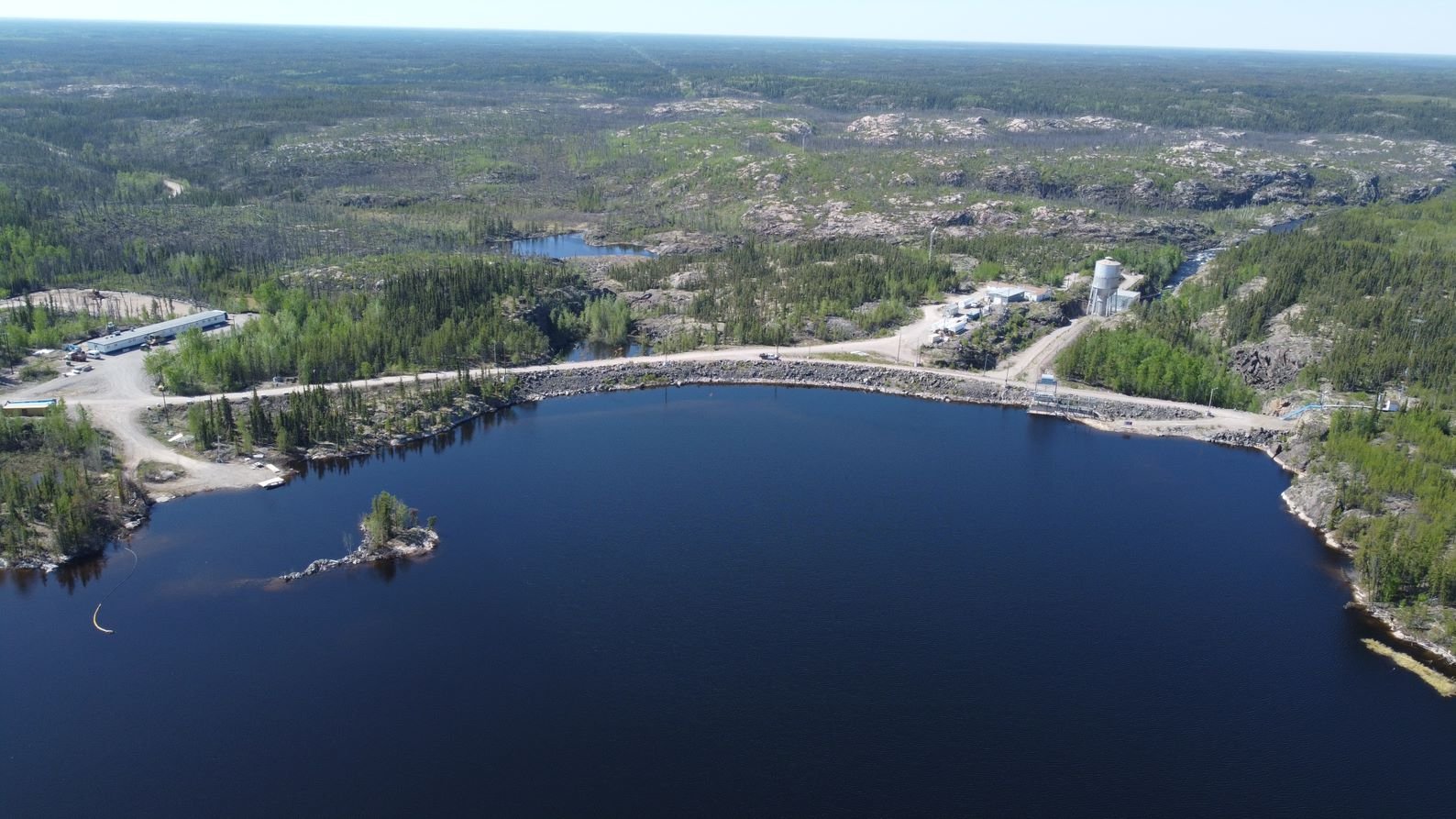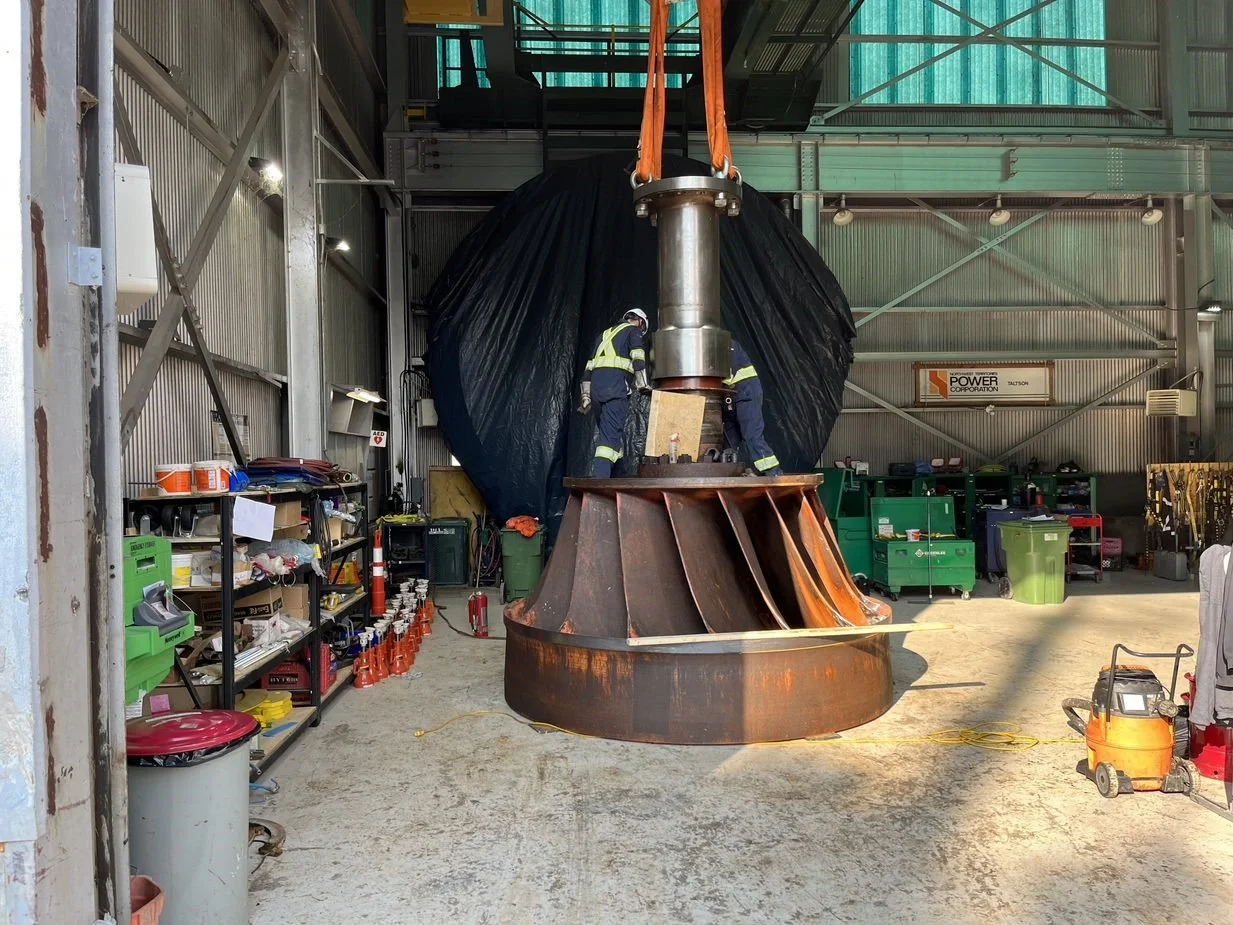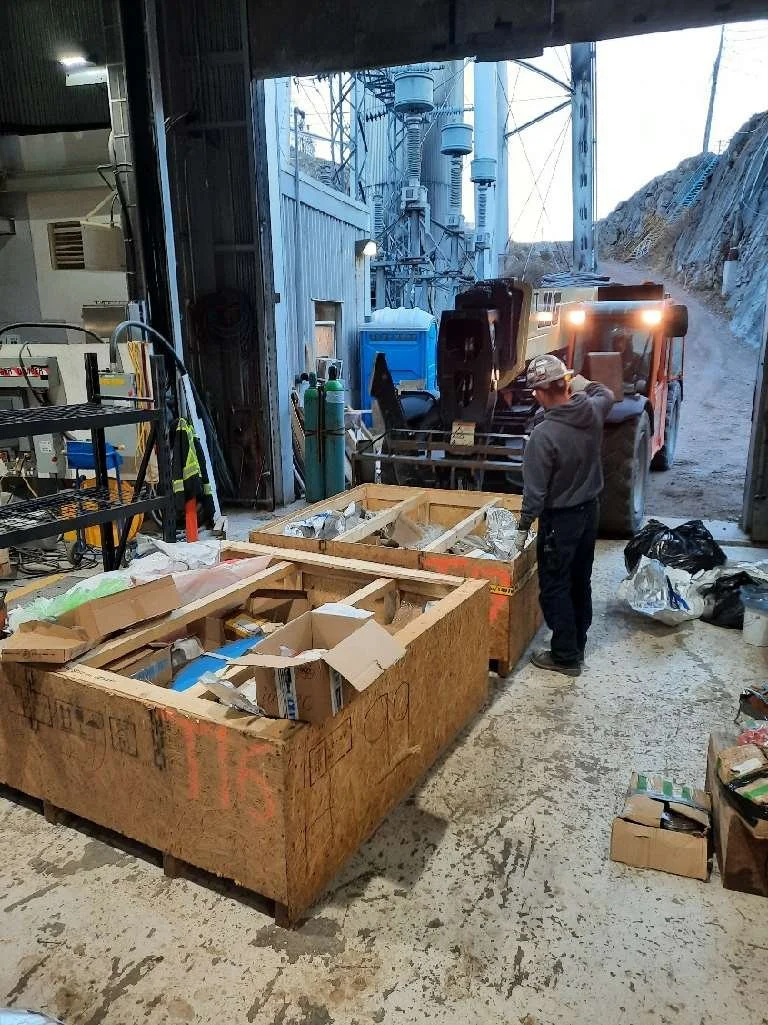Sustainability.
Powering the North Projects
Government of the Northwest Territories Taltson Hydro Expansion Project
A transformative government-led initiative to connect grids and electrify the North by adding significant clean electricity to the South Slave grid.
Project Overview
The Government of the NWT is leading the Taltson Hydro Expansion Project, which will add 60 MW of capacity to the existing 18 MW Taltson hydro system and install a new transmission line connecting with the Snare/Bluefish hydro system. Ongoing work involves extensive engagement with Indigenous partners, finalizing the business case to support the pursuit of project funding from the federal government, and advancing engineering design and regulatory requirements. NTPC supports the project as needed by providing subject matter expertise.
Once built, an integrated hydro system connecting the Snare and Taltson hydro systems will stabilize electricity rates for many communities and customers. The project offers partnership opportunities for Indigenous governments and job prospects for Northerners. A single hydro grid will support industry and transportation sectors as they transition from fossil fuels, providing access to clean energy north and south of Great Slave Lake.
Why It Matters
The Taltson Hydro Expansion Project will enable a more reliable, integrated northern grid. This power will electrify communities, drive economic activity, and develop profitable Indigenous partnerships.
Combined with additional transmission infrastructure, there will be opportunities to develop future mines, extend hydroelectric power to traditional diesel communities, eliminate standby diesel plants with redundant transmission, provide export opportunities, develop hydrogen generation or carbon capture infrastructure, and meet electrification requirements in the hydro zones for space heating and electric vehicles.

























Fort Simpson LNG Transition: Cleaner Fuel
Fort Simpson is on the path to a lower-carbon future with the construction of a new liquefied natural gas (LNG) power plant.
Project Overview
For years, Fort Simpson’s primary source of electricity has been diesel: reliable, but costly and carbon-intensive. The LNG power plant will replace its existing diesel facility, which is at risk of catastrophic failure due to erosion of the nearby riverbank.
Project phases:
Planning & Engineering: Complete
Construction Start: Scheduled for 2025
Commissioning: Expected in 2026
Why It Matters
The new LNG plant will provide the community with a more efficient, resilient, and environmentally responsible energy source. It will:
Cut greenhouse gas (GHG) emissions by using a cleaner-burning fuel
Improve energy reliability with modern, efficient equipment
Reduce fuel costs and operating expenses over time
Enhance climate resilience in the face of riverbank erosion threatening the existing diesel plant’s location
Fort Providence Transmission Line: Connecting Communities
A new transmission line will connect the Hamlet of Fort Providence and Ka'a'gee Tu First Nation (Kakisa) to the Taltson hydro system for the first time
Project Overview
Advancing plans to build a new transmission line between Hay River and Fort Providence is a crucial step toward providing cleaner, more reliable power to communities in the Dehcho region. This new line will allow Fort Providence to be connected to the Taltson hydro system for the first time, significantly reducing reliance on diesel generation.
NTPC is collaborating with local governments, Indigenous partners, and the GNWT to ensure that this project reflects community needs and values. Environmental assessments, route planning, and engagement with rightsholders will all shape how this line is built.
Why It Matters
Currently, the Hamlet of Fort Providence relies on diesel generation for its power. This fuel is expensive, carbon-intensive, and vulnerable to supply disruptions. Connecting the community to nearby hydro power through this new transmission line will:
Reduce greenhouse gas (GHG) emissions by replacing diesel with clean hydro
Improve energy reliability through grid connection
Lower fuel and maintenance costs over time
Create opportunities for further electrification and economic development in the region
EV Infrastructure: Advancing Electric Transportation
Developing an EV charging corridor from Yellowknife to the NWT/Alberta border.
Project Overview
NT Energy, our sister company that leads energy innovation projects and initiatives, has installed public electric vehicle (EV) charging stations in Behchokǫ̀, Fort Smith, and Hay River, with a fourth slated for Buffalo Junction in the summer of 2025. Equipped with Level 2 and Level 3 chargers, access to the charging stations is available 24 hours a day, seven days a week.
These new stations are part of an electric vehicle (EV) corridor that will eventually extend from Yellowknife to the Northwest Territories (NWT) border with Alberta. The federal and territorial governments are providing funding for the projects.
Why It Matters
The EV corridor will help reduce greenhouse gas (GHG) emissions in the transportation sector by supporting the transition from fossil-fueled to electric and hybrid vehicles.
Community Solar: Renewable Energy Expands
Green, clean solar power is becoming more prevalent in the energy mix of communities across the NWT.
Project Overview
Nine NWT communities have installed solar arrays; five are owned and operated by NTPC, the other four locally owned, providing electricity to the grid through Power Purchase Agreements.
Why It Matters
Our strategic plan emphasizes the importance of increasing renewable and alternative energy generation in the North to achieve territorial and federal emissions reduction targets. Among the renewable technologies that have been integrated into various grids are wind and solar, through partnerships with Indigenous governments and organizations. NT Energy is in discussions with a number of other communities about their clean energy future.
Fort Smith Voltage Conversion: System Stabilization
Conversion to a higher voltage for greater consistency in power quality.
Project Overview
NTPC will upgrade electricity service in Fort Smith by increasing the voltage flowing from the substation from 5 to 25 kilovolts.
Why It Matters
Load growth in Fort Smith over the past few decades has led to voltage and power quality issues for customers. Converting to the higher voltage will provide customers with greater consistency in the quality of their power. After the conversion, NTPC will be able to connect new customers without impacting system stability.
Mining and Industry: Supporting Economic Growth
NT Energy is pursuing business opportunities with industrial customers, with a focus on the mining industry.
Project Overview
Mining companies and their investors are seeking to reduce their carbon footprint to meet their ESG reporting requirements, which often involves obtaining electricity with zero or low emissions. NT Hydro, along with its Indigenous partners, can develop and provide green hydro power to new mining customers, bringing much-needed economic activity to the North.
In 2022, NTPC signed a Memorandum of Understanding (MOU) with Osisko Metals (now Pine Point Mining Limited), a Canadian critical mineral exploration and development company. The MOU outlines the process of negotiating a connection to the Taltson grid and a power purchase agreement for the Pine Point Project. This project aims to bring an inactive mine back into service due to attractive reserves of zinc and lead.
The MOU provides a framework to continue the informal discussions between NTPC and Osisko Metals that have been underway over the past several years.
Why It Matters
Mines and other new industrial customers represent a significant economic development opportunity for the NWT. They create direct and indirect jobs, and also provide new revenues for NTPC, which helps offset upward rate pressure for all customers.
Routine Activities
In addition to capital projects and programs, day-to-day activities performed by NTPC employees and contractors support the reliability pillar. These include:
